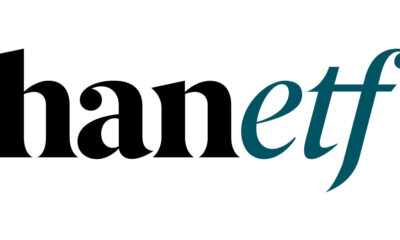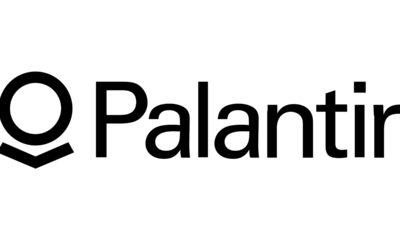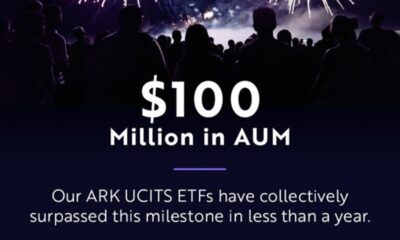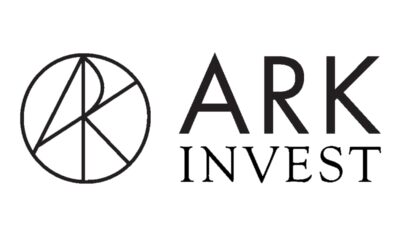Aktiva ETFer representerar en fjärdedel av de 34 tematiska ETFerna som lanserades under årets första sju månader. Det gör att stockpickers hittar en ny nisch i tematiska ETF–strategier genom tematiska strategier, med fler emittenter som väljer att undvika index i sina nya trendföljande produkter.
Färre än 18 procent av de 197 temafokuserade ETFerna som utses av FactSet hanteras aktivt. Aktiva ETF:er representerar dock 26 procent av de 34 tematiska ETFer som lanserades i år i USA fram till den 6 augusti.
Fem av årets tio mest sålda tematiska ETFer förvaltas aktivt. Ark Investments Innovation ETF (ARKK) på 23 miljarder dollar fick 6,7 miljarder dollar i nettoomsättning fram till den 6 augusti, enligt FactSet. Ark Genomic Revolution ETF (ARKG) på 8,7 miljarder dollar fick under tiden 2,5 miljarder dollar i försäljning; Ark Fintech (ARKF) på 3,7 miljarder dollar samlade in 1,9 miljarder dollar; BlackRock US Carbon Transition Readiness ETF (LCTU) på 1,4 miljarder dollar drog in 1,3 miljarder dollar; och Ark Autonomous Technology & Robotics ETF (ARKQ) på 2,8 miljarder dollar lade till 1,2 miljarder dollar.
Sammantaget tog aktiva ETFer in 83 miljarder dollar under första halvåret 2021, knappt 17 procent av de totala amerikanska ETF -flödena, enligt FactSet. Active representerade 3 procent av alla ETF -tillgångar per den 30 juni.
Arks genombrott 2020 kan till stor del ha drivits av prestanda, konstaterar analytiker. Men det New York-baserade företaget har öppnat dörren till portföljtillgångar nog för att andra företag med tillväxtorienterade meriter ska ge det ett försök, säger de.
”Ark har legitimerat aktiv förvaltning och också katapulterat tematiska investeringar i investerarnas tankesätt”, säger Todd Rosenbluth, chef för fond- och ETF-analys på CFRA.
Men det tematiska segmentet på marknaden har ”mycket gråzon, och så ser vi fler företag försöka skapa sig som nästa Ark, nästa iteration av denna trend”, sa han. Men ”det är inte klart att investerare bryr sig. De kommer att titta på företag baserat på deras senaste resultat. ”
Tematiska ETF-förvaltare hävdar under tiden att deras val av aktiv eller passiv är mycket mer nyanserad.
”Jag tror inte att det är något under det senaste året som har förändrat vårt tillvägagångssätt”, säger Ryan Issakainen, ETF -strateg på First Trust. ”När vi lanserar aktiva fonder är vi mycket selektiva i de strategier som vi använder dem för.”
Företaget har drivit tematiska indexbaserade ETFer sedan 2006, när Dow Jones Internet Index Fund (FDN) lanserades, noterade han. ETF:ens 10,8 miljarder USD-historik validerar den långsiktiga lönsamheten för att gruppera aktier över sektorer med ekonomiska band till en trend, tillade han.
”Det du ser är vad du får med en tematisk indexbaserad produkt,” sade Issakainen. Aktiva versioner ger chefer fria händer att tolka ett tema, tillade han. Och tematiska riktmärken innebär en större nivå av mänskligt omdöme av indexleverantören än bredbaserade eller faktorfokuserade index gör, noterade han.
First Trust har vågat sig på aktiva tematiska ETFer i de fall företaget vill ha flexibilitet i hur man tolkar eller artikulerar produktens tema, sa han.
Till exempel lanserade företaget i slutet av maj sin $ 3m Innovation Leaders ETF, som investerar i företag som ligger i frontlinjen för flera trender. Vissa av de branscher som ingår i indexet kan dock representeras av endast en handfull aktier och är för små för att passa in i ett fristående index, noterade Issakainen.
Amplify Investments har ett liknande tillvägagångssätt som First Trust, genom att välja aktivt för ”dynamiska marknadssegment” eller områden där det vill vara taktiskt för att hantera risker i sådana aktier, säger VD Christian Magoon. Till exempel har företagets $ 1.2bn Transformational Data Sharing ETF, som lanserades 2018 och fokuserar på blockchain och kryptokänsliga aktier, en smink som bäst fångas med aktiv tillsyn, noterade han.
”Det är svårt att skapa ett regelbaserat index kring ett segment som är så innovativt”, skrev han i ett mejl. Företaget kunde också köpa upp små namn i stora portioner, där förvaltaren kontrollerade diversifieringsrisken. Amplify följde ett liknande tillvägagångssätt med medicinsk och fritids cannabis.
Men för att få investerare att köpa sig in aktivt krävs fortfarande mycket tålamod och uthållighet, konstaterade analytiker och chefer.
Index-spårande ETFs har den praktiska fördelen att det är lättare att ta sig igenom distributörens due diligence, sade Issakainen.
Och Arks utbrott 2020 kom sex år efter att produkterna debuterade, och efter att ha fördubblats till underpresterande aktier som Tesla, sa Rosenbluth.
”Förvaltningsindustrin har länge gjort ett bra jobb med att erbjuda snabbföljande produkter”, sa han. ”Aktiv tematisk är tillräckligt bred för att vi ska se dussintals fler ETFer komma ut.”

 Nyheter4 veckor sedan
Nyheter4 veckor sedan
 Nyheter4 veckor sedan
Nyheter4 veckor sedan
 Nyheter3 veckor sedan
Nyheter3 veckor sedan
 Nyheter4 veckor sedan
Nyheter4 veckor sedan
 Nyheter4 veckor sedan
Nyheter4 veckor sedan
 Nyheter4 veckor sedan
Nyheter4 veckor sedan
 Nyheter2 veckor sedan
Nyheter2 veckor sedan
 Nyheter3 veckor sedan
Nyheter3 veckor sedan






















